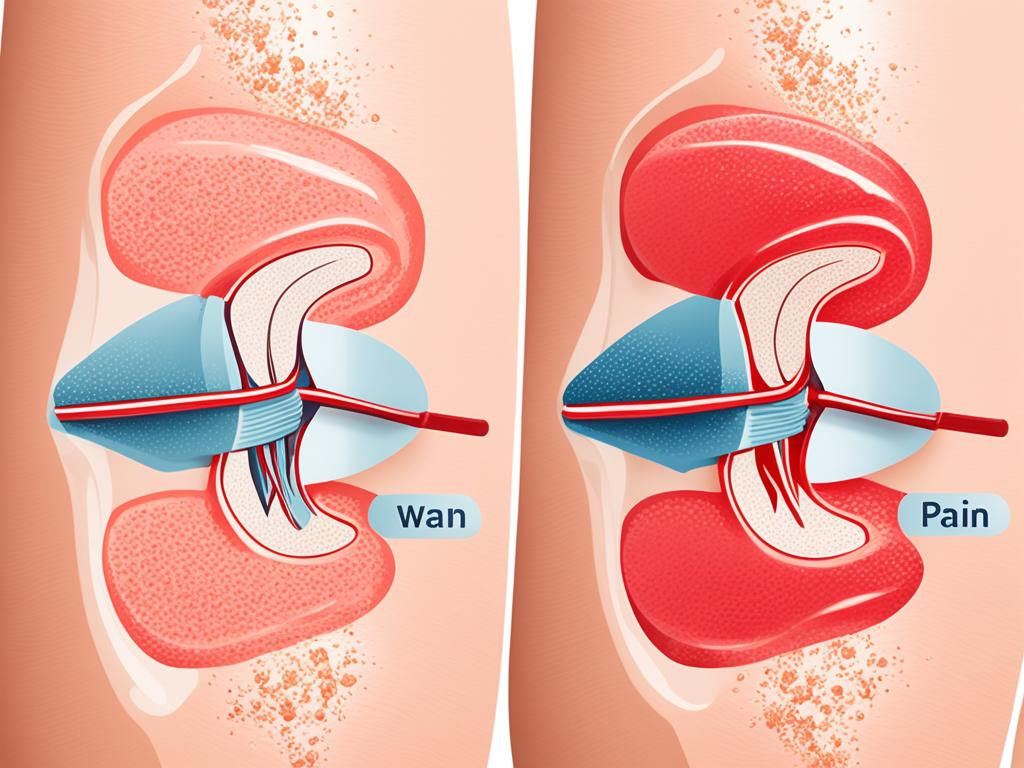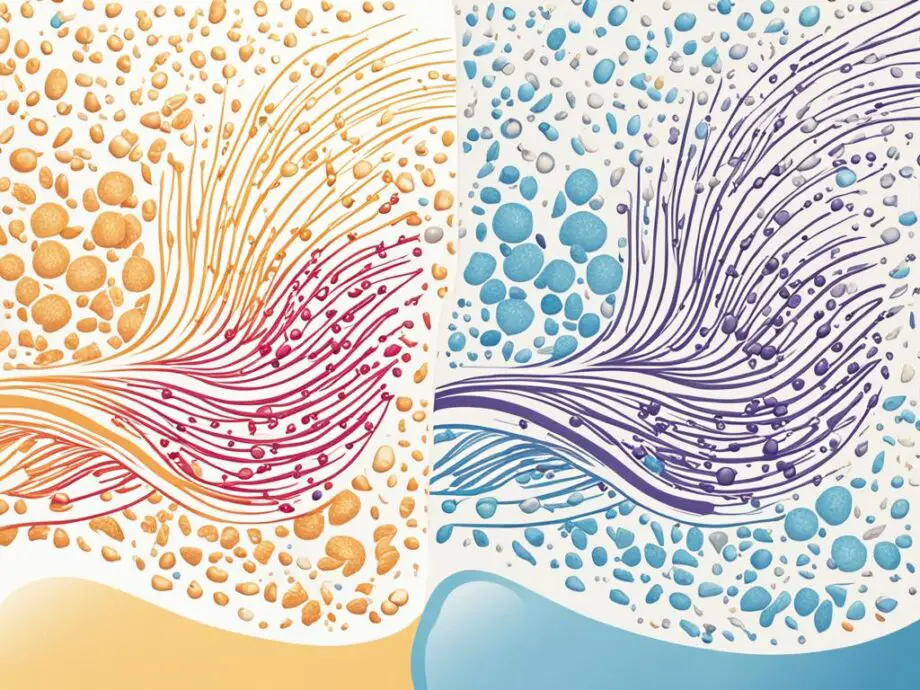When it comes to hair removal, we all want to achieve smooth, hair-free skin without having to endure unbearable pain. However, both laser hair removal and waxing have reputations for being painful procedures, leaving many wondering which one hurts more. Understanding the pain associated with these methods is crucial in making an informed decision about which one to use.
Key Takeaways
- Waxing and laser hair removal are both known to cause discomfort.
- The pain level varies based on factors such as the method of hair removal and individual pain tolerance.
- Minimizing pain is possible through certain preparations and techniques.
- Pain reduction methods are available for both waxing and laser hair removal.
- Effective communication with professionals is crucial in assessing pain levels during treatment.
Evaluating Pain Between Laser Hair Removal and Waxing
It’s no secret that hair removal can be a painful process. When deciding between laser hair removal and waxing, understanding the level of discomfort involved is an important factor.
Factors Affecting Pain Levels
The method of hair removal plays a significant role in the level of pain experienced. While laser hair removal is often touted as less painful than waxing, several factors can affect this perception. For example, the intensity of the laser used and the area being treated can impact pain levels.
Waxing can also vary in pain levels, with some individuals reporting more discomfort than others. Anatomical areas that are more sensitive, such as the bikini area or underarms, can cause more pain during waxing.
Individual pain tolerance is another significant factor in determining pain levels. What is painful for one person may not be as uncomfortable for another.
Comparing Pain Levels
When comparing the pain levels in laser hair removal vs waxing, studies have shown varying results. One study found that laser hair removal was less painful than waxing, while another found that pain levels were similar between the two methods.
| Method | Pain Level |
|---|---|
| Laser Hair Removal | Varies depending on individual pain tolerance, area being treated, and intensity of laser used |
| Waxing | Varies depending on individual pain tolerance and area being treated |
Ultimately, pain perception is subjective, and the level of discomfort will vary from person to person. It is essential to consider individual pain tolerance when making a decision about hair removal.
Expert Insight: “While laser hair removal may generally be less painful than waxing, pain levels depend on several factors, including individual pain tolerance and the area being treated. A skilled practitioner can help minimize discomfort during both laser hair removal and waxing.” – Dr. Sarah James, Dermatologist

Minimizing Pain in Laser Hair Removal and Waxing
Laser hair removal and waxing are both effective methods of hair removal, but they can cause some discomfort during the process. However, there are several techniques and strategies you can use to minimize pain and enhance your overall hair removal experience.
Pre-Treatment Preparations
One important step in minimizing pain during laser hair removal and waxing is to properly prepare your skin beforehand. This includes exfoliating the area being treated to remove any dead skin cells that may interfere with the hair removal process. Additionally, avoid sun exposure and tanning beds for at least two weeks prior to treatment, as this can increase skin sensitivity and pain during the procedure.
Numbing Options
If you have a low pain tolerance, you may benefit from using a topical numbing cream or gel before your treatment. These products contain lidocaine, which helps to temporarily block pain signals in the nerves at the treatment site. Be sure to consult with your provider before using any numbing products, as they may interfere with the hair removal process if not used properly.

Aftercare Tips
After your laser hair removal or waxing treatment, it’s important to take certain steps to alleviate discomfort and reduce the risk of complications. Apply a cooling gel or cream to the treated area to soothe the skin and reduce redness, and avoid tight clothing that may irritate the area. You may also want to avoid activities that cause sweating or friction in the treated area for at least 24 hours after the procedure.
Reducing Pain During Laser Hair Removal and Waxing
For many individuals, the thought of pain can be a major deterrent from undergoing laser hair removal or waxing treatments. Fortunately, there are various pain relief options available that can help alleviate discomfort during these hair removal procedures.
Topical numbing creams: One of the most popular pain relief options for laser hair removal and waxing are topical numbing creams, like lidocaine. These creams are applied directly to the skin prior to treatment and can help reduce pain sensations.
Cooling devices: Cooling devices, such as ice packs or cold air blowers, can be used to numb the area being treated and minimize pain. These devices work by temporarily reducing nerve activity and can provide immediate relief during treatment.
Pain relievers: For individuals with a particularly low pain tolerance, over-the-counter pain relievers, like ibuprofen or acetaminophen, can be taken prior to treatment to help reduce discomfort. However, it’s important to consult with a healthcare provider before taking any medication.
Distraction techniques: Simple distraction techniques, like listening to music or engaging in deep breathing exercises, can also help reduce pain during laser hair removal or waxing. By focusing on something other than the treatment itself, individuals are better able to manage any pain or discomfort they may be feeling.
It’s important to keep in mind that everyone’s pain tolerance levels are different, so what works for one person may not work for another. It’s best to speak with a trained professional to determine the best pain relief options for your individual needs.
Pain Assessment in Laser Hair Removal and Waxing
When it comes to assessing pain levels in laser hair removal and waxing, it’s important to remember that pain is subjective and can vary greatly between individuals. However, open communication with professionals and using pain assessment tools can help in determining the best course of action to minimize discomfort during hair removal treatments.
During laser hair removal sessions, professionals may use a pain scale to gauge the level of discomfort experienced by patients. This allows for adjustments to be made to the treatment, such as changing the intensity of the laser, to ensure optimal results with minimal discomfort.
In waxing, a similar approach may be taken, where individuals are asked to rate their pain level on a scale from 1 to 10. This allows the aesthetician to customize the waxing process to minimize discomfort and provide the smoothest possible results.
It’s also important to keep in mind that there are various factors that can contribute to pain levels, such as the area being treated, the individual’s pain tolerance, and the method of hair removal. Therefore, it’s crucial to communicate openly with professionals and make informed decisions when choosing a hair removal method.
Tools for Pain Assessment
There are also various tools that can be used to assess pain levels during laser hair removal and waxing. These include:
| Name of Tool | Description |
|---|---|
| Visual Analog Scale (VAS) | A simple scale that allows patients to rate their pain level on a scale from 0 to 10. |
| Face Pain Scale | A scale that uses facial expressions to assess pain levels. Patients select a face that best represents their level of discomfort. |
| Verbal Descriptor Scale (VDS) | A scale that uses descriptive words to gauge pain levels, such as “mild,” “moderate,” and “severe.” |

Using these pain assessment tools in combination with open communication with professionals can help individuals make informed decisions when it comes to laser hair removal and waxing. By understanding pain levels and taking steps to minimize discomfort, individuals can achieve smooth, hair-free skin with confidence.
Conclusion
Choosing between laser hair removal and waxing can be a difficult decision, particularly when considering the level of pain associated with each method. While both treatments can be uncomfortable, it’s important to remember that pain tolerance is subjective and can vary greatly between individuals.
By evaluating the pain levels associated with each option and taking advantage of pain management strategies, you can minimize discomfort and make the most of your hair removal experience.
Ultimately, the decision between laser hair removal and waxing should be based on your personal preferences, hair type, and budget. It’s important to find a balance between achieving smooth, hair-free skin and minimizing pain.
With this in mind, take the time to research your options and consult with a professional to determine the best hair removal method for you. By prioritizing your comfort and needs, you’ll be well on your way to achieving the results you desire.
FAQ
Is laser hair removal less painful than waxing?
The level of pain experienced during laser hair removal and waxing can vary depending on individual pain tolerance and the area being treated. However, many individuals find that laser hair removal is generally less painful than waxing.
Why is laser hair removal less painful than waxing?
Laser hair removal works by targeting the hair follicles with laser energy, which damages the follicles and inhibits future hair growth. This process is less painful because it only affects the hair follicles and not the surrounding skin. On the other hand, waxing involves pulling the hair out from the root, which can be more uncomfortable.
Are there any pain management strategies for laser hair removal and waxing?
Yes, there are several strategies to minimize pain during these hair removal treatments. These include applying numbing creams or gels before the procedure, using cooling devices to cool the skin during treatment, and practicing deep breathing or relaxation techniques to reduce discomfort.
What are some pain relief options for laser hair removal and waxing?
Some common pain relief options for laser hair removal and waxing include taking over-the-counter pain medications such as ibuprofen or acetaminophen, applying soothing creams or gels containing ingredients like aloe vera, and using cold compresses to reduce inflammation and numb the area.
How can pain levels in laser hair removal and waxing be assessed?
Pain assessment in these treatments is subjective and varies from person to person. It is important to communicate openly with the aesthetician or technician performing the procedure and provide feedback regarding pain levels. Some professionals may also use pain scales or ask you to rate the pain experienced during different parts of the treatment.
